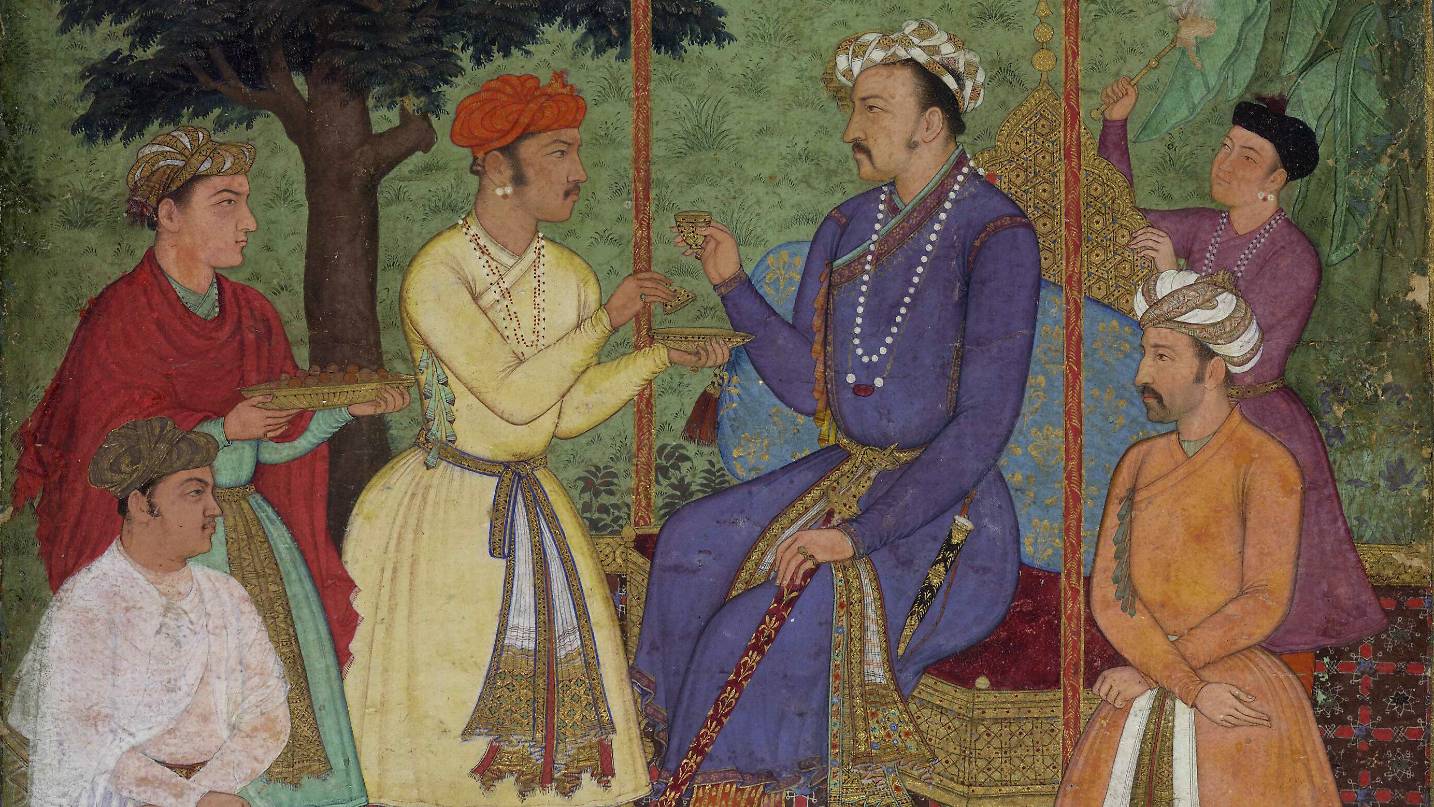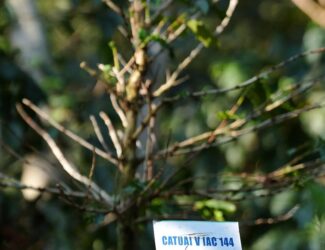
History of coffee in India according to DRWakefield
The website of ‘DRWakefield’ has recently released a comprehensive report detailing the history of coffee in India. This report contains a wealth of significant information, tracing the journey of coffee from Ethiopia and Yemen to India.
‘QahwaWorld’ is pleased to announce the re-publication of this report in its entirety, even though there may be some differences in specific details. We aim to present the content as it is, respecting the original information provided by ‘DRWakefield’.”
While researching for this article, I stumbled upon Edmund C. P Hull’s book from 1865 “Coffee Planting in Southern India and Ceylon”. I noticed that he lived in Madras (modern-day Chennai) and the book was published by the Gantz brothers based out of Mount road, known as one of the most important roads of Chennai dating over 400 years old. These journals on coffee were sent back to London. I was born and raised in Chennai and lived a 6-minute drive from Mount Road. Today, I am writing this article only 15 minutes from where these journals were posted to in Charring Cross, from the DRWakefield London Office.
India, a land of diverse cultures and traditions has a rich history of coffee cultivation and consumption. This journey takes us through the origins influences, and dynamic evolution of the coffee culture in India, exploring the mystical tales of Baba Budan, the colonial imprints of the Dutch and the British, and the pulse of the 3rd wave coffee movement.
The Seven Seeds
The historical roots of coffee trace back to Africa, and its journey subsequently led it to the Arabian peninsula. Yemen emerged as a coffee cultivation powerhouse, exporting exclusively roasted coffee from the port of Al-Makha. Meanwhile, ancient India was renowned for its spice trade, a highly sought-after commodity globally. Arab traders, drawn to India in pursuit of these spices, introduced roasted coffee to the region. Coffee quickly captivated the elite circles of the subcontinent, sparking a surge in demand that far exceeded the supply.
The first actual mention of coffee being consumed comes from the work of Reverend Edward Terry in the court of Emperor Jahangir, in 1616. He was the chaplain to Sir Thomas Roe, ambassador of the King of England, at Jahangir’s court. He writes
“Many of the people there, who are strict in their religion, drink no at all; but they use a liqour more wholesome than pleasant, they call coffee; made by a black seed boyld in water, which turns it almost into the same colour, but doth very little alter the taste of the water: notwithstanding it is very good to help digestion, to quicken the spirits, and to cleanse the blood.”
MUGHAL EMPEREOR, JAHANGIR, IS BEING SERVED FOOD AND DRINK BY HIS TWO SONS KHUSRAU AND PARVIZ. MUGHAL DYNASTY, INDIA (1610)
Knowing that there was a demand for coffee and that it was well appreciated within India, it was only a matter of time before it would grow locally. Enter the legend,(of) Baba Budan, a Sufi saint who, in the 17th century, carried seven coffee seeds from Yemen in his beard whilst returning from a pilgrimage. Planted in the hills of Chikmagalur (Western Ghats), these seeds marked the inception of coffee cultivation on Indian soil, a move that would shape the country’s history. The hills are now referred to as the Baba Budangiri Hills and a shrine has been built there in his honour.
THE HILLS OF BABA BUDAN GIRI
Birth of Plantations
Now that we know how coffee arrived in India, let’s look into how cultivation grew. In 1650, Pieter van den Broecke, working for the Dutch East India Trading Company, visited Mocha in Yemen and tasted something “Hot and Black”. He was the first Dutch merchant to taste coffee. He also decided to steal the coffee seeds and take them back to Amsterdam. As the climate in the Netherlands wasn’t suitable for cultivation, in 1658, the Dutch shipped the coffee east to Ceylon (Sri Lanka) and later Southern India. The Dutch were among the earliest European colonial powers involved in the Indian coffee trade during the 17th century, later abandoning this cultivation to focus on their Javanese plantations to avoid lowering the price by oversupply.
The British East India Company, later in the 18th century, played a crucial role in shaping the coffee industry in India. The coffee plant gained popularity in regions like Karnataka, where British planters started large-scale cultivation. Over time, the British promoted coffee cultivation in the Nilgiri Hills and Wayanad, contributing to the diversification of coffee-growing regions in India.
Not long ago the British Museum held an exhibition on the history of coffee. I came across some of DRWakefields coffee sacks but also a beautiful painting of the coffee plant that was part of a botanical album compiled in Calcutta, recorded by William Roxburgh, the Superintendent of the Calcutta Botanical Garden (18th Century). British botanists ventured into the hills of the western ghats to investigate and research coffee plants and their behaviour. In fact, the very oldest plant specimens at Kew were gathered in India in 1696.
Whilst the British grew and shipped coffee from India, around the Cape of Good Hope to Northern Europe, at certain times of year the coffee would change. This was not a short journey and would take around 6 months; in the monsoon season, this was ample time for the beans to absorb the additional moisture, swelling and changing character into what we now call Monsoon Malaabar coffee.
Shipping gradually improved, times reduced, but the flavour was still desirable, and so the understanding of what caused these changes were adapted to replicate the monsooning in large open-sided warehouses on land over the hulls of wooden ships. These days coffee is exposed over a period of 3-6 months on the west coast of India, which occurs between June/July and September.
Modern Coffee Cultivation
Although India primarily cultivated Arabica coffee, widespread infestations of coffee leaf rust to India from Sri Lanka compromised 30% – 50% of the crop. Robusta plants were discovered to be more tolerant to the humidity and resistant to diseases like rust. They also found that not only were the beans larger in size but also cheaper to grow. Over time, the majority of the coffee cultivated in India shifted towards Robusta. Learn more about the birth of robusta in our article here.
Today, both Arabica and Robusta are cultivated in India, with over 70% of the national production reserved for exports. Coffee is now largely cultivated in Southern India primarily in Karnataka, Kerala, Tamil Nadu and Andhra Pradesh. The non-traditional areas popularly known as the “Seven Sister States of India” comprising the states of Assam, Manipur, Meghalaya, Mizoram, Tripura, Nagaland and Arunachal Pradesh of Northeastern India also grow smaller amounts of coffee, mainly contributing to the local market.
COFFEE GROWING REGIONS OF INDIA
Shade-Grown and Sustainable Coffee
Although shade-grown coffee practices are not exclusive to India, most of the coffee produced in India is shade-grown under a canopy of evergreen and leguminous trees. When Guus visited India back in 2020 (Trip Report), he was pleasantly surprised by the vast amounts of shade everywhere. He said, “Big silver oaks, jackfruit, soapnut, sacred fig, matti and many other jungle wood species hung over the plantations, creating the feeling of being in a forest”. Less direct sunlight brings down the crop size but increases the quality by slowing down the ripening process and giving sugars more time to develop.
ARCHULEY ESTATE
Many coffee farms in India incorporate a variety of fruits and spices into their cultivation practices. This polyculture approach originated from the realisation that solely depending on coffee might not provide sufficient economic support for the land, given the unpredictable nature of global coffee prices. It is now common to see cardamom, nutmeg, cloves, oranges and tangerines, and pepper vines growing alongside the estate’s coffee plants. Coffee here is also handpicked without any machinery to ensure only fully ripe beans are harvested, often with multiple rounds of selective picking. Indian coffee is also sun dried on patios often lined with brick, stones, or concrete. Many estates will also use raised beds for the initial stages.
The increasing variety of overhead shade trees provide a sanctuary for birds and enhance the quality of natural organic matter introduced to the soil from falling leaves. This decomposed organic matter enriches the soil, conserves moisture, and reduces the need for chemical fertilizers. Shade trees also control the growth of weeds on the estates and reduce the incidence of insects, pests, and leaf disease.
Shade coffee also plays an important role in India’s wildlife. The Western Ghats are globally recognised as one of the 36 biodiversity hotspots of the world that runs over 1500km long. Although the area accounts for less than 6 percent of the national land area, it contains more than 30 percent of all plant, fish, bird and mammal species found in the country. Atleast 325 globally threatened species can be found in the Western Ghats. Over a third of the region’s plant species are endemic and BirdLife International has designated it ‘Western Ghats Endemic Bird Area’, as it has 16 restricted-range species confined to this region. The Nilgiri Flycatcher is one such threatened species endemic to the region, but is one of the many birds that is often found only in shaded coffee plantations and this is crucial for its conservation.
NILGIRI FLYCATCHER BY N.A. NASEER
South Indian Filter Kaapi
Tea and Coffee are widely available in India and often served in every household across the country. That said, this is not the tea and coffee that you might be familiar with. Although coffee is consumed around the world, it means different things in different cultures. In India, a cup of coffee now denotes hot milk and sugar mixed with a concoction brewed through percolation of finely ground coffee powder, often containing between 20-49% Chicory which counteracts the bitterness and balances it with its own sweet and woody flavours. This drink is known as South Indian Filter Kaapi. If you are interested in brewing this, check out this video [7]. Despite refraining from sugar and being lactose intolerant, this is by far my favourite way to drink coffee.
FILTER KAAPI SERVED IN STEEL TUMBLER AND DAVARA
3rd Wave Coffee Movement
Our world has seen coffee trends come and go but in the last few decades, we have seen a period of growth and evolution for the global coffee industry. Though the traditional Filter Kaapi has been very popular, there is a shift towards specialty coffee in India. You might already be familiar with the 3 waves of coffee, and those waves are ripping on the coastline.
Over the last two decades, India saw a surge in the growth of large corporations setting up coffee shops which one could relate to the second wave. India’s very own Cafe Coffee Day, commonly known as CCD, had a revolutionary impact on Indian coffee culture. Founded in 1996, by 2016 they had over 2000 cafes across 220 cities. Unfortunately, poor financial management led to its downfall.
Enter Starbucks. In 2011, Starbucks and Tata Coffee announced plans to begin opening Starbucks in India through a 50:50 joint venture. As of 2023, they now have over 333 cafes around India. This is one of the few cafes in India offering coffee from a variety of origins. Cafe chains are now growing quicker than ever with Costa Coffee, Pret a Manger, Tim Hortons and more opening throughout the country.
GROWTH OF STARBUCKS IN INDIA
The first speciality cafe that I had been to was in fact called ‘Third Wave Coffee’ back in 2017, and at the time that was their only cafe. 6 years later, they now have over 100 cafes and are aiming for 300 in the near future. In 2020, I was back home in Chennai because of the infamous Covid-19. I read that the first speciality cafe was opening in my city and I immediately applied to work with them. I have slowly noticed that now there are more specialty cafes than I can keep count of within just 4 years. The covid effect has been seen across various industries, as visiting cafes wasn’t an option anymore, and Indians needed to purchase brewing equipment nearly tripling the number of home brewers. Coffee drinkers started to explore how people are beginning to understand how coffee is grown, processed and sourced.
India, despite ranking 6th in global coffee exports, faces unique domestic challenges. If you went into a local speciality cafe looking for a chocolatey Brazil or a berry-like Kenyan (as I’ve tried), you are not likely to find it. Importing green coffee bears a Basic Customs Duty (BCD) of 100%, accompanied by a 10% Social Welfare Surcharge (SWS) within India. Consequently, this hefty tariff structure discourages local roasters from actively seeking out imported coffee, limiting consumers with little choice of Origin.
While of course there are challenges, such as infrastructure limitations, quality control and market education, the trajectory of the specialty coffee industry in India points towards a bright future with a dynamic and ever-evolving landscape.
At DRWakefield, we have an amazing selection of coffees from India. This year, we will be looking at sourcing the Gems of Araku again. We have been in partnership with Gems of Araku since 2012 and have always been supportive of them, promoting their different coffee profiles coming from different tribes, villages, and districts in the beautiful Araku Valley, Andhra Pradesh. Keep an eye out for these delicious micro-lots!



